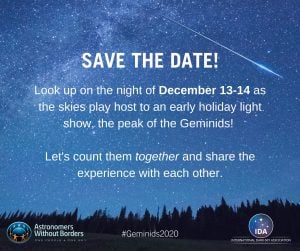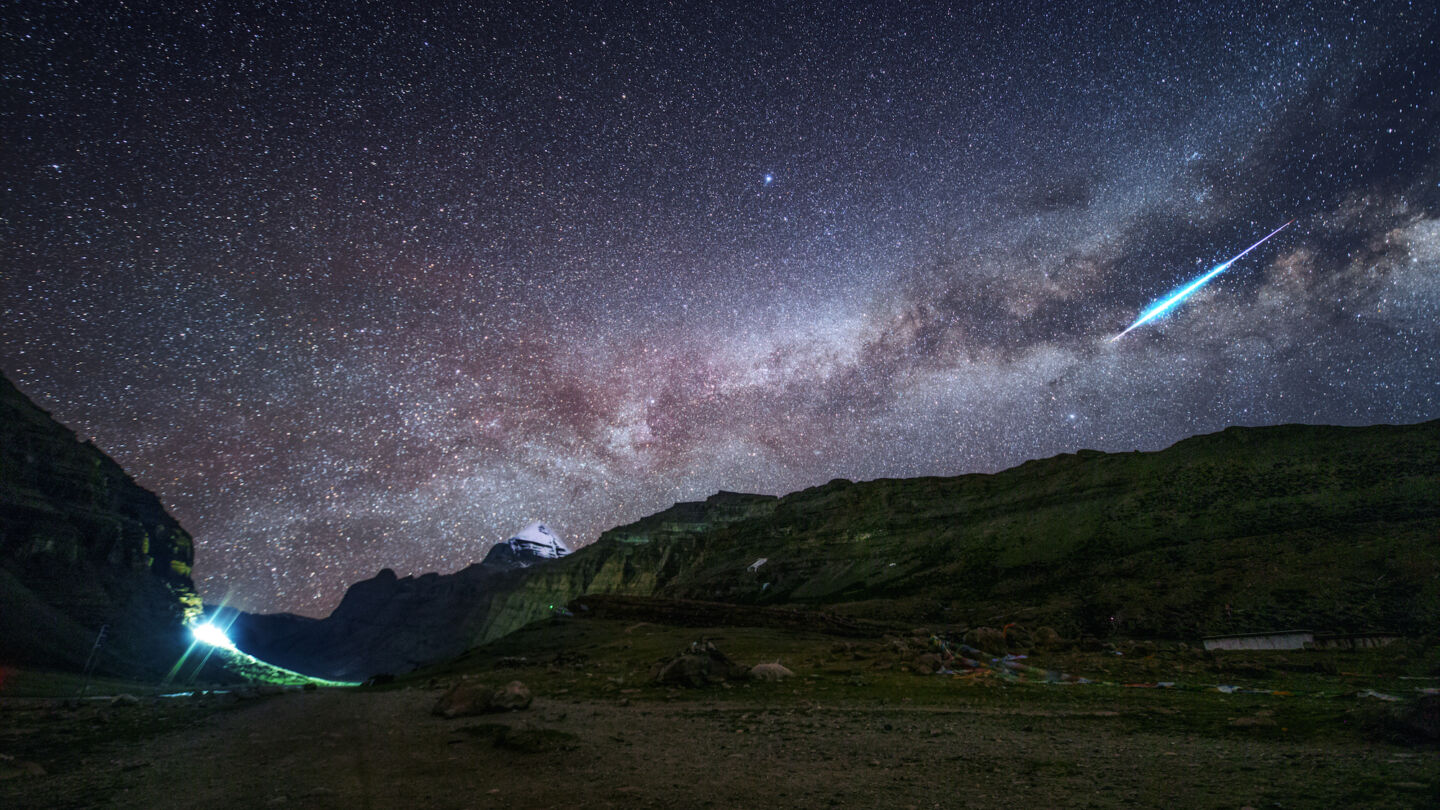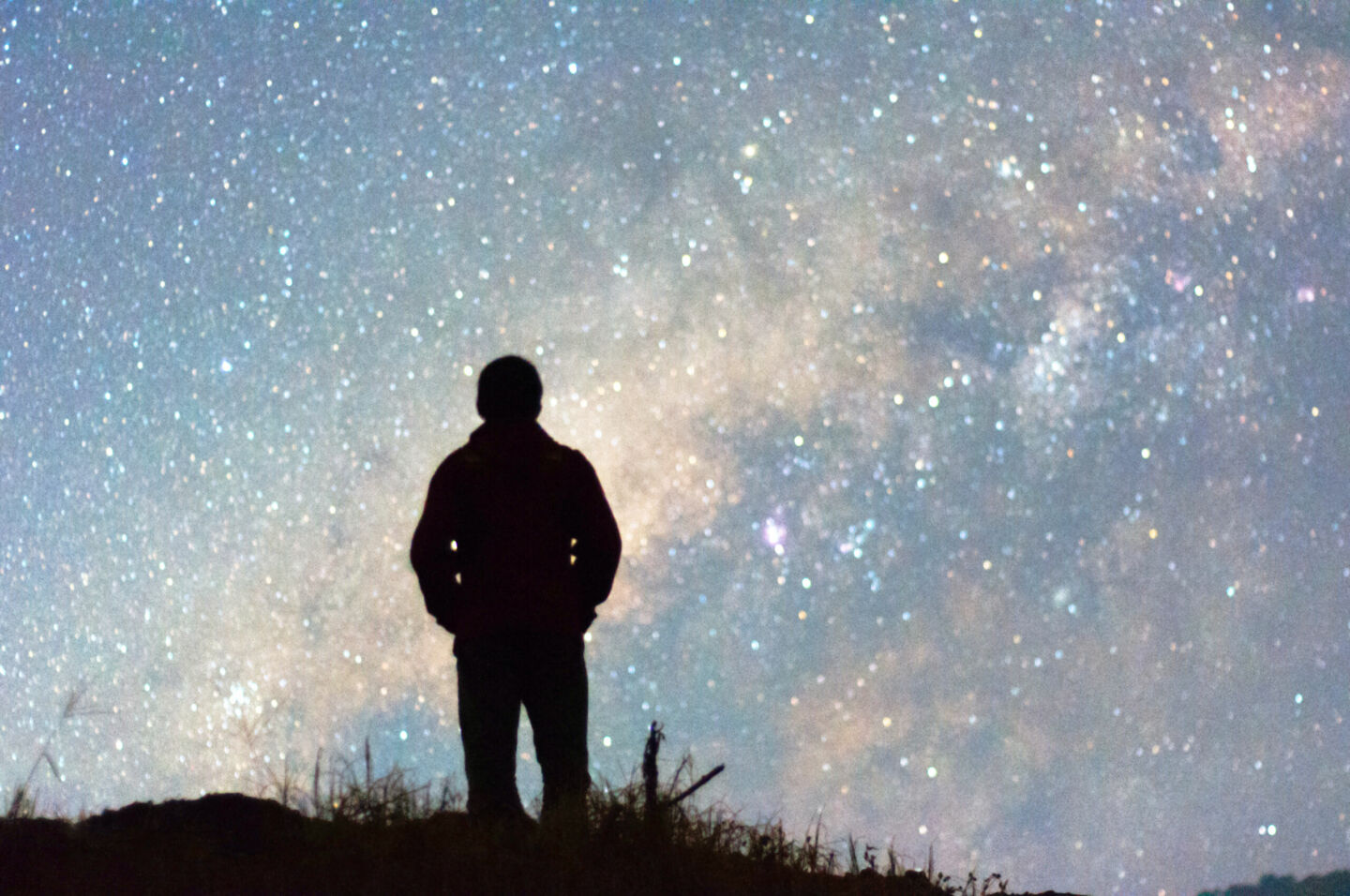
An Early Holiday Treat: The Geminids
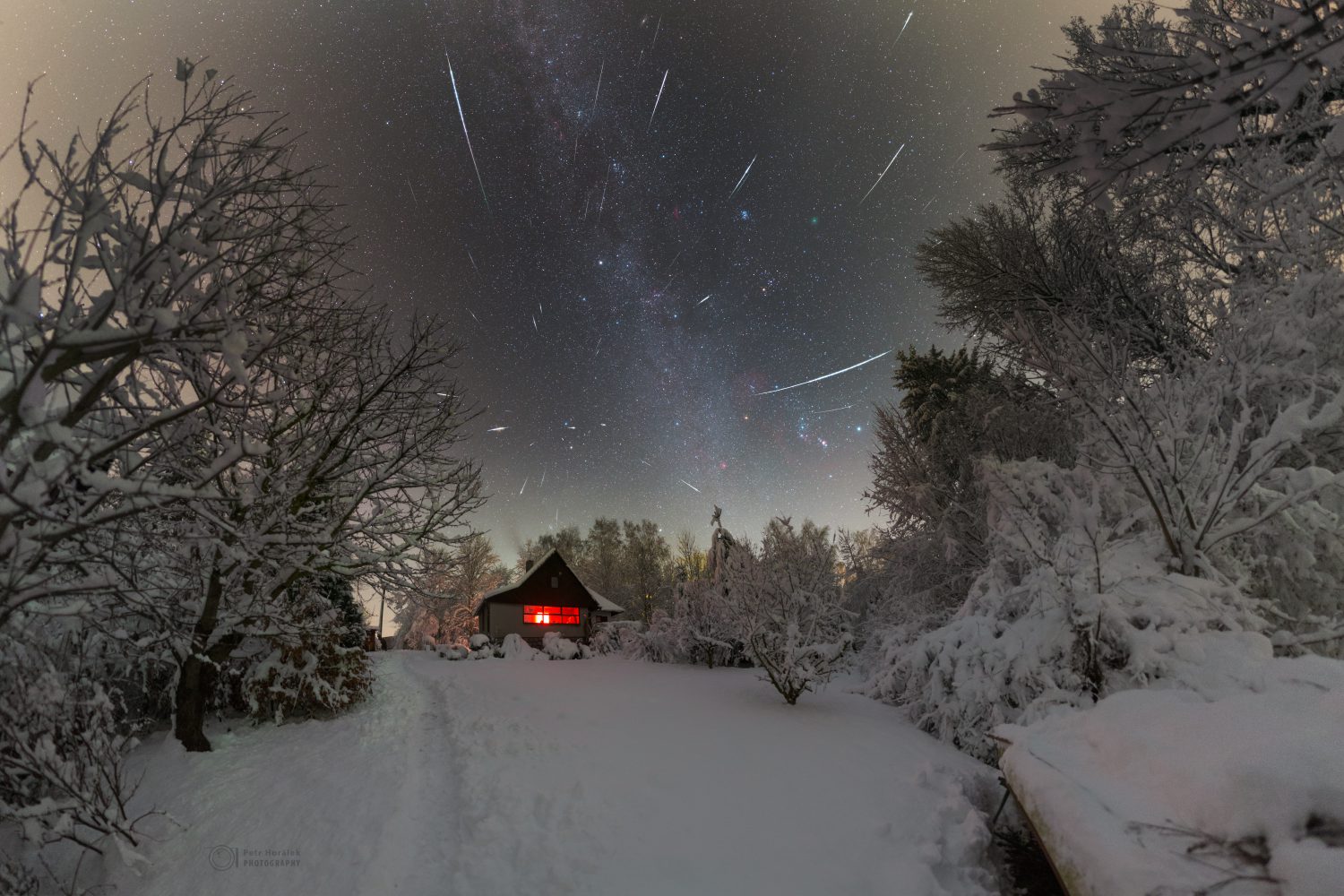
The following content about the 2020 Geminids was developed in collaboration between the International Dark-Sky Association and Astronomers Without Borders.
We had so much fun teaming up with Astronomers Without Borders for the Perseids in August that we decided to do it again! Join us as the sky plays host to a spectacular early holiday light show this December: the annual Geminid meteor shower. For many skywatchers, the Geminids are the highlight of the year, and for a good reason: it is among the year’s most active meteor showers. This year is expected to be an excellent year for the Geminids, as the new Moon coincides with the shower’s peak on the night of December 13-14, 2020. That means that the meteors won’t have to compete with the light from the Moon. Meteor showers are an excellent chance to experience the splendor of the night sky because you don’t need any special equipment. It’s also always exciting since you never know when a meteor will streak across the sky.
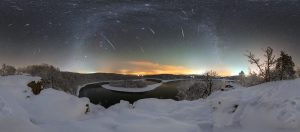
A Little About the Geminids
Unlike every other annual meteor shower that’s source is a comet, the Geminds have a much less obvious source. Every December, the Earth crosses the orbital path of an unusual asteroid called 3200 Phaethon. Astronomers think that 3200 Phaethon may be the remnant of a comet that lost all of its volatile components like ices, leaving behind only rocky materials. It sheds dusty debris that enters our atmosphere and vaporizes, producing the streaks of light that we call meteors. When this shower first started appearing in the 1800s, it was hardly remarkable, with only an average of 10-20 meteors per hour. Since that time, it has grown to be one of the most notable meteor showers of the year.
The Geminids are active from December 4-20, 2020. While this shower favors the northern hemisphere, where the radiant (the point where the paths of the meteors seem to trace back) is higher in the sky, they can also be observed in the southern hemisphere. The higher the Gemini constellation climbs in the sky, the more meteors you are likely to see. The best time to watch is 2:00 AM local time, all across the globe.
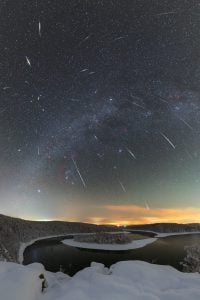
Tips for Watching
- If you can, get away from light pollution to maximize the number of meteors that you will see. If you can’t, keep any exterior lights in your control of turned off.
- Give your eyes a chance to fully adjust to the dark. This can take anywhere from about 20-30 minutes.
- Watch as close to the peak time on the peak night (2:00 AM local time) as you can. This will boost your chances of seeing the most meteors. Of course, if that’s not possible because of personal reasons or weather, get out there and look up earlier in the evening or on a different night.
- Sit back, relax, and enjoy the show!
Let’s Look Up Together
Are you planning to watch the Geminids? We want to hear all about it! Tell us how many you saw and where you watched from. Use the hashtag #Geminids2020 and tag us (@idadarksky, #idadarksky) and Astronomers Without Borders (@awb_org on Twitter and @astronomerswithoutbordersorg on Instagram) in any social media posts.
For more amazing photos of the 2018 Geminids please visit Petr Horálek’s website here.

















